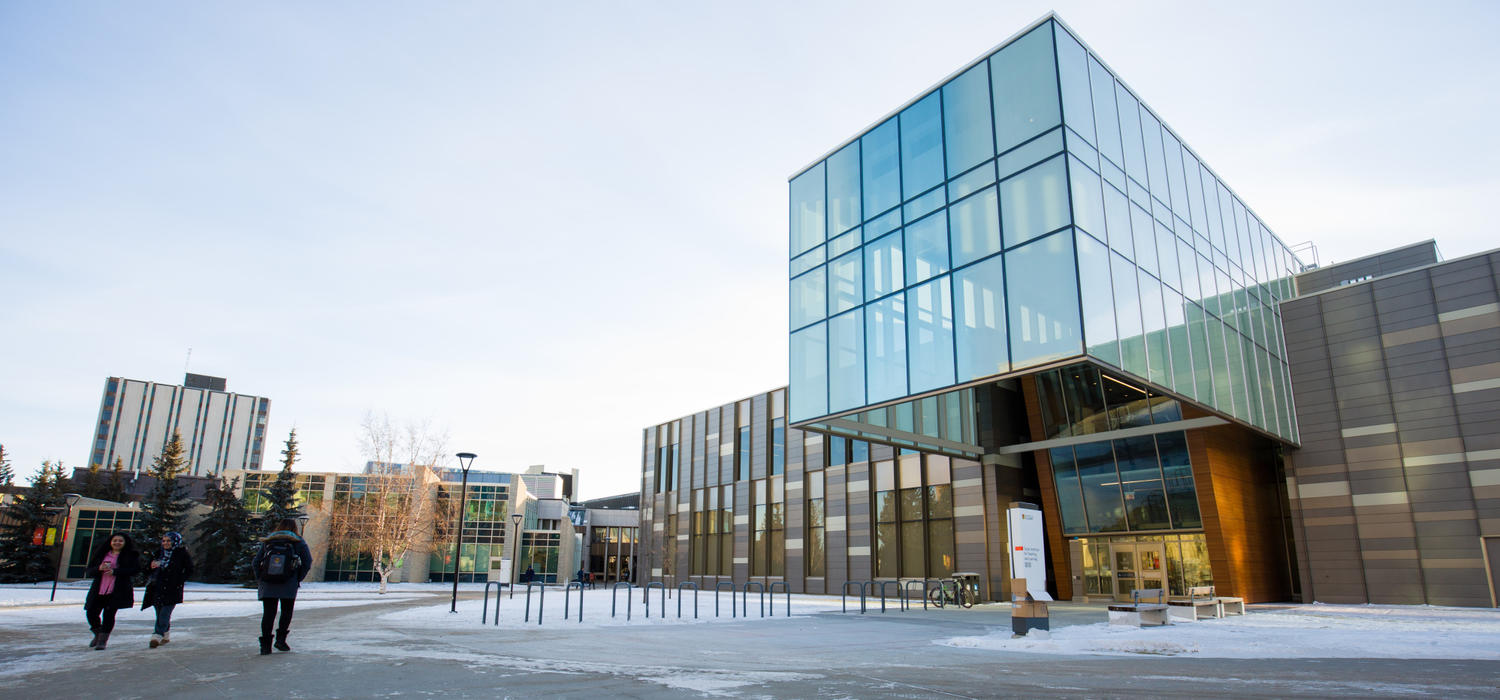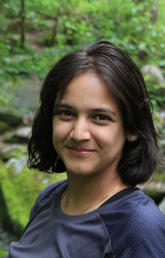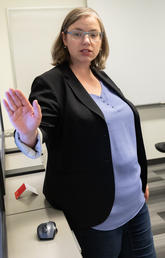Jan. 17, 2020
Starting out as a teaching assistant: What I wish I knew

For many grad students, working as a teaching assistant (TA) is a big part of the transition from student to teacher. Stepping up to the lectern takes courage and confidence, and it’s one of the best ways you can enhance your graduate studies with practical experience and transferable skills.
I asked three current graduate students for some advice on succeeding as a TA. Brittany Lindsay is in the final year of her MSc in experimental psychology, James Papatzimas is a fifth-year PhD candidate in organic chemistry, and Shabnam Moghtader is completing her MA in communications, media and film.
Faculty of Graduate Studies: Are you currently a TA? How long have you been a TA, and when was your first TA experience?
Lindsay: I‘m teaching a graduate level statistics class of 17 students in psychology. I was a TA for labs of 20 to 50 students for three years in mathematics and statistics as an undergraduate from 2013 to 2016. I have been a graduate TA in psychology since 2018; last year I taught research methods labs of 20 students.
Papatzimas: I’m teaching an advanced organic chemistry lab techniques course with eight students. I have been a TA at UCalgary since 2015, and I was also a TA at St. Francis Xavier University for three years. I started there as an introductory chemistry TA. On average, each lab I’ve taught has been about 20 students.
Moghtader: I’m not currently a TA. My first year as a TA was 2017, when I taught two classes with approximately 20 students each.
Q: Can you describe your past and present TA duties?
Lindsay: As a TA, I have facilitated student lab work (answering questions and guiding students), taught more formally in labs, marked assignments and exams, invigilated exams, answered many (so many) emails, collaborated with the instructor and other TAs, prepped materials for labs, and held office hours.
Papatzimas: As a TA for undergraduate courses, my duties have reoccurring themes. In chemistry labs, student safety is a responsibility of TAs. Other responsibilities include marking, interacting with students, and addressing student concerns and issues. TAs are often a link between the instructor and students, and we have a personal perspective on how students are handling course work and meeting expectations. My favourite role as a TA is interacting with students and seeing them progress throughout the year.
Moghtader: I would attend lectures; doing so helps prepare you for tutorials and for fielding unexpected questions arising from course content. It also shows the professor that you care about the content and the students. Other duties include doing course reading, grading, developing lesson plans, leading tutorials, updating D2L, and being available during office hours.
Q: Being a TA can take a lot of time and energy. Do you have any advice about managing workload?
Lindsay: It can take up a lot of time, but it is so worth it. If possible, try to TA something you are comfortable with the first time so that it requires less preparation. Additionally, try to slot out time for marking and answering emails so that you aren’t disrupting your other work for these things. Put your duties into a calendar as if they were a class.
Papatzimas: I use a Google calendar and will set blocks of time specifically for marking, so in my research I can have some down time waiting for reactions while I mark. Discussing solutions with your supervisor on how you’re going to manage your time is also very helpful, and will often result in their long-term support.
Moghtader: Keep an open line of communication with the professor you are assisting. Be clear on what your role and duties entail and keep track of how many hours you’re putting into your TA tasks. If you feel you’re doing too much, discuss with the professor. They may have tips on how to cut down time spent on something like grading.
Q: Tell us about your participation in training from the Taylor Institute, or any other support you’ve received from your supervisor or program. Do you have any recommendations in this regard?
Lindsay: The TI Graduate Student Certificate in University Teaching and Learning (and its badges) is awesome! I have completed three badges (Emerging Teaching and Development, Theories and Issues in Post-secondary Teaching and Learning, and Developing Your Teaching Dossier) and will be completing the Scholarship of Teaching and Learning Foundations badge this term. You learn valuable information from the facilitators, and you get to collaborate with students from other departments.
Papatzimas: The chemistry department has a Teaching Assistant Training and Mentoring (TATM) program, run by graduate students. This was very helpful for me. In my early days of teaching I had a lot of support from a lab technician, and these are great people to bounce ideas off of and ask for help.
Moghtader: I received a lot of support from my supervisors. Again, keeping an open line of communication is key. I would often ask for feedback on lesson plans, grading or guest lecturing. This helped me stay on track and ensured continued improvement and success in tutorials and presentations as a TA and also as a student.
Q: Has your work as a TA changed how you look at your own research?
Lindsay: A friend of mine told our graduate students the other day, “I recommend being a TA because you learn new things yourself.” Because I have been teaching statistics for two years, I think that refreshing these concepts has made me a stronger researcher because you really need to understand the material well to be able to teach it.
Papatzimas: Teaching has allowed me to interact with students who have different learning styles and perspectives than myself, and I try to implement different ways of thinking in my research daily.
Moghtader: Absolutely. It actually makes me more detail-oriented, which ultimately makes me work harder.
Q: What is one thing that surprised you about your role as a TA, and what is the most challenging thing about it?
Lindsay: The thing that surprised me the most was how important a TA can be in a student’s academic journey. The most challenging thing about it is wanting everyone in the class to do well and not seeing that happen.
Papatzimas: TAs have an amazing opportunity to build great connections with students. This is challenging at the same time because you have to balance your role as a TA who is here to instruct them, and as a mentor who wants to see them do their best.
Moghtader: The most surprising thing about my role as a TA was how much I enjoyed meeting with students. You really never know what questions they will have. The most challenging thing is grading. I learned from a supervisor not to mark papers relative to one another, and to remember the parameters of the assignment. It helps to refer back to a rubric.
Q: If you could go back in time and give yourself one piece of advice starting out as a TA, what would it be?
Lindsay: Teaching is not a race. Take your time and be deliberate and confident in your words and your body language. It is a lot of work and sometimes you’ll be frustrated with the students, but at the end of the day, I have never regretted a single moment.
Papatzimas: Always take the time to answer a student’s question thoughtfully. It doesn’t have to be in the moment, but make sure you get them an answer at some point. It might be the answer that keeps them interested in that topic.
Moghtader: Know the limits of your responsibilities and never make up answers. It’s OK to tell a student that you’re unsure. Just let them know you’ll get back to them with the answer. And don’t forget to get back to them.
Learn about the Taylor Institute's graduate student teaching development programs
The Graduate Student Certificate in University Teaching and Learning enables graduate students on diverse career paths in academia, government, industry and non-profit to gain essential teaching and learning skills and knowledge. Throughout the program, you’ll develop skills and confidence in supporting student learning, success and engagement. You’ll also document your understanding of teaching and learning into a robust dossier that reflects your evolving experience, goals and skills. To complete the certificate, you will need to earn five digital badges — or microcredentials — that you can work on simultaneously or one at a time.



